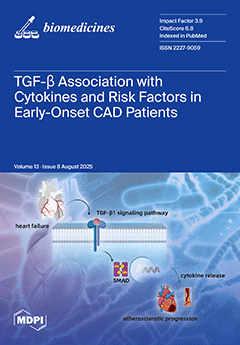Background: Foot pain often persists in patients with rheumatoid arthritis (RA), even during clinical remission. However, its causes are not fully understood. Identifying factors specifically associated with metatarsal pain, rather than generalized foot pain, may improve targeted management strategies.
Objectives: The aim of this study was to compare the clinical, biomechanical, and radiological characteristics of RA patients in remission with isolated metatarsal pain versus those with pain in other foot regions, and to identify independent predictors of metatarsal pain.
Methods: This cross-sectional study included 118 RA patients in remission, classified into two groups: isolated metatarsal pain (
n = 61) and pain in other foot regions (
n = 57). Clinical variables (demographics, disease duration, treatment, comorbidities), biomechanical measures (ankle, first metatarsophalangeal and subtalar joint mobility, hallux valgus severity, foot type), radiographic findings (erosions, subluxations), and ultrasound-detected synovitis in the 2nd–5th metatarsophalangeal (MTP) joints were recorded. Independent predictors were identified using binary logistic regression.
Results: Patients with metatarsal pain had higher rates of severe hallux valgus, MTP synovitis, and dislocations ≥ 50%. Independent predictors were hallux valgus (OR = 5.428, 95% CI: 1.528–19.287,
p = 0.009), MTP synovitis (OR = 2.093, 95% CI: 1.337–3.275,
p = 0.001), and MTP dislocations (OR = 2.092, 95% CI: 1.275–3.432,
p = 0.003).
Conclusions: Persistent metatarsal pain in RA remission is associated with a distinct structural and biomechanical profile. Comparing foot pain by location may help identify clinically relevant patterns and support more individualized assessment and treatment strategies. Due to the cross-sectional design, causality cannot be established.
Full article






